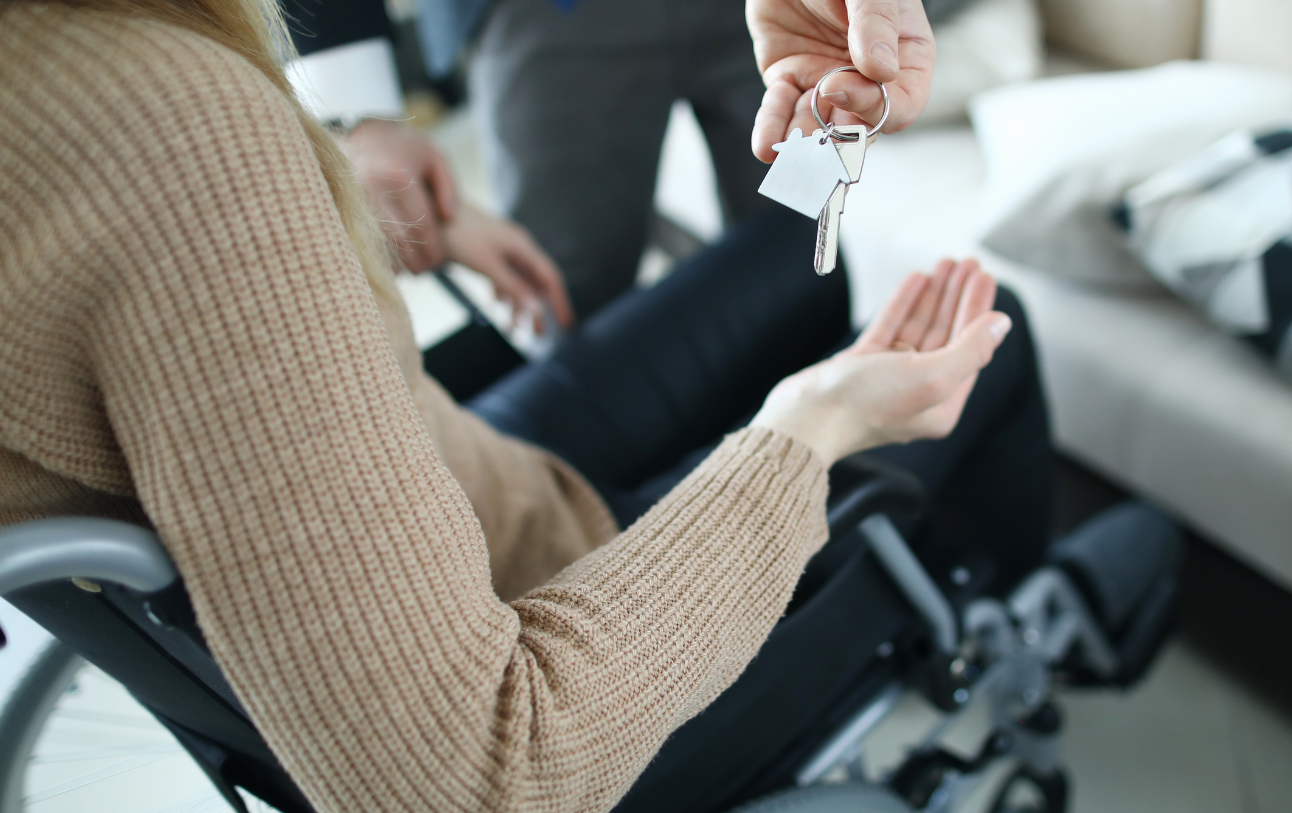
Disability and domestic violence
Dr Justin Varney is the National Lead for Adult Health and Wellbeing at Public Health England. In this blog, he talks about the ways that people living with impairments are affected by domestic abuse, and the ways in which barriers to accessibility further disable individuals seeking help. For an audio version, scroll down to the bottom of the page.
About 1 in 5 of the population live with an impairment which leads to them being disabled in their interactions with the world around them.
Impairments are not always inherited or congenital at birth, but can be acquired throughout the life course. The proportion of adults with an impairment increases with age. Around 6% of children have an impairment, compared to 16% of working age adults and 45% of adults over state pension age
In 2015 Public Health England published a report on disability and domestic violence. The report reviewed the published evidence and statistical information about domestic violence affecting disabled people. It highlighted that disabled people experience disproportionately higher rates of domestic abuse. They also experience domestic abuse for longer periods of time, and more severe and frequent abuse than non-disabled people
The differences between genders in experiences of domestic abuse are similar among disabled people. Disabled women are significantly more likely to experience domestic abuse than disabled men and experience more frequent and more severe domestic abuse than disabled men. However, as being disabled carries further risk of domestic abuse, disabled men also experience higher rates of abuse than non-disabled men. Disabled men experience a similar rate of domestic abuse as non-disabled women
People with disabilities may also experience domestic abuse in wider contexts and more often from significant others, including intimate partners, family members, personal care assistants and health care professionals. Disabled people encounter differing dynamics of domestic abuse, which may include more severe coercion, control or abuse from carers. Abuse can also happen when someone withholds, destroys or manipulates medical equipment, access to communication, medication, personal care, meals and transportation.
Domestic violence is one of those topics for disabled people that society tends to shy away from. Much of the data and the evidence in the report was not new, and the disproportionately higher levels of domestic violence were clearly visible in the data. Yet this is not a topic that we hear much about.
Society tends to avoid discussion of disabled people’s relationships, particularly their sexual relationships, and it may well be that domestic violence falls under this curtain of paternalistic discretion. But we are doing disabled people a major disservice by not acknowledging their sexual and reproductive health and wellbeing, and talking about issues of domestic violence and sexual abuse is a key part of this.
This invisibility and avoidance has implications beyond the individual interactions for people enduring or perpetrating domestic violence, as the exclusion of disabled people in domestic violence discourse extends to research and many data collections and surveys. This invisibility in the research and evidence base further compounds the marginalisation of disabled people’s experiences of domestic violence, and makes it harder for services to be commissioned or provided with their needs in mind.
Not only do disabled people experience higher rates of domestic abuse, they also experience more barriers to accessing support, such as health and social care services and domestic abuse services. The poor accessibility of services is one of the barriers that creates the disability for the individuals living with the impairment. The lack of a sign language translator, information which is not available in audio or large print, or a staircase only entrance, all disable the individual from engaging with services in the same way as people without impairments.
Accessibility barriers can also be cultural: if staff aren’t trained to consider the needs of people with impairments and if they aren’t trained about domestic violence, then they will not be able to support the people who need them most.
Closing the gap will require whole system approaches to inclusion and diversity, which ensure all services working with people with impairments across their life course are educated about domestic violence and abuse. It will also require that services for people enduring and perpetrating domestic violence are accessible for people with impairments.
Alongside addressing the access and education issues in services and providers, it is also important that this issue is visible in the social narrative and discussions within disability communities.
Although many impairments happen in adult life, it is essential that those who have an impairment in childhood are given the tools to negotiate healthy relationships. Relationship education within special schools should explicitly discuss coercion and control in the context of relationships and should be empowering young people with impairments to have healthy and safe sexual and reproductive lives.
The issue of domestic violence affecting people living with impairments is one where the lack of awareness, barriers to accessibility and a prevailing reluctance of society to acknowledge sexual relationships in this community further disables those affected by domestic violence and abuse.
You may be interested in

